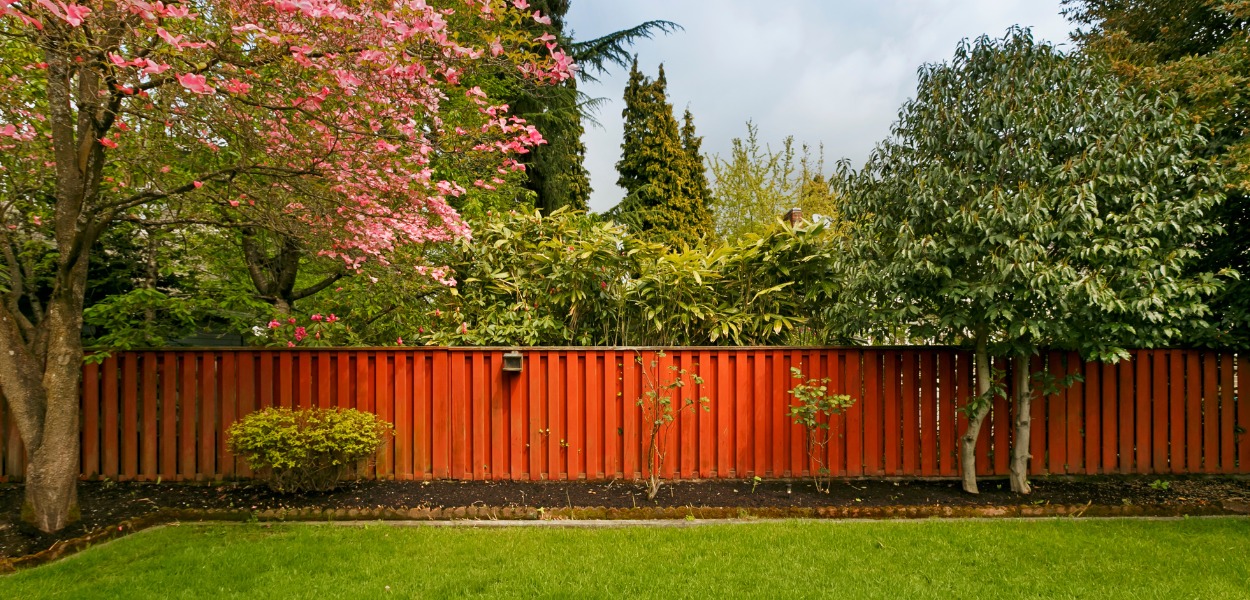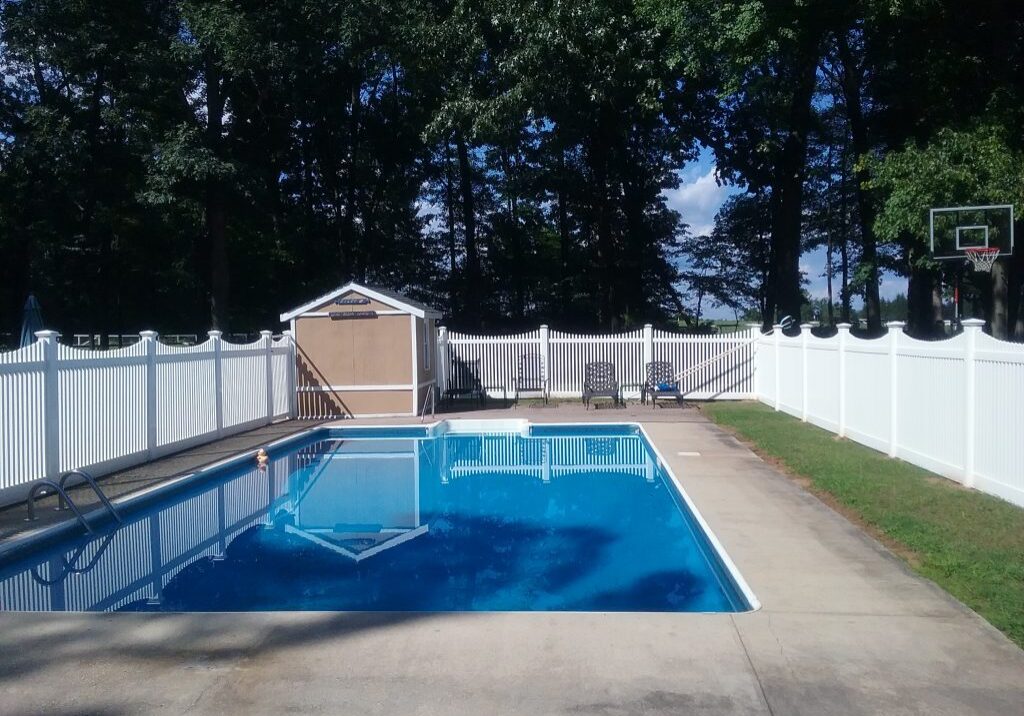All Categories
Featured
Fencings are vital frameworks that give privacy, safety and security, and visual interest your residential property. They are likewise revealed to the elements and can experience damages from climate problems like rain, wind, snow, and sun. Whether you have a wood, vinyl, steel, or composite fence, taking actions to protect it from the climate will certainly extend its life and protect its look. Right here are a number of means you can safeguard your fence from weather-related damages.
![]()
Wood Fencings: Timber is susceptible to rot, bending, and insect problems when revealed to dampness. If you pick a wooden fencing, choose products like cedar or redwood, which are normally extra resistant to the components. Furthermore, select pressure-treated wood, which has been chemically treated to resist rot and bugs. Vinyl Fences: Vinyl fences are extremely resistant to the components. They will not rot, warp, or crack like timber, and they are unsusceptible to insect damages. Vinyl is additionally UV-resistant, so it doesn't discolor in the sun as quickly as other materials. Steel Fencings: Wrought iron and light weight aluminum fencings are immune and long lasting to most weather. However, steel can rust if revealed to moisture for long term durations. If you have a metal fencing, guarantee it is galvanized or powder-coated to prevent rusting. Composite Fences: Composite fencings combine timber fibers and plastic, offering the look of wood with enhanced toughness. They are immune to rot, pests, and fading, making them a good selection for areas with severe climate condition. 2. Apply Safety Coatings and Sealants. Applying protective finishes to your fencing can protect against wetness and UV damage, dramatically prolonging its life-span.
Wooden Fencings: To secure wood from dampness and UV rays, use a premium sealer or stain. These coatings function as an obstacle, preventing water from saturating into the wood and triggering rot. Furthermore, they protect against sunlight damages that can trigger fading and cracking. Make sure to reapply the discolor or sealer every few years, depending upon the climate and the condition of the fence. Vinyl Fences: Although vinyl fences are highly long lasting, they can still fade gradually as a result of UV exposure. You can use a UV protectant to keep your vinyl fence looking like new. Furthermore, routine cleaning with a vinyl-safe cleanser can aid protect against discoloration and staining. Metal Fences: Metal fencings, particularly those constructed from iron or steel, can corrosion gradually. A rust-resistant primer followed by a layer of weather-resistant paint will aid protect against deterioration. For added protection, consider powder finish, which offers a durable, long-lasting surface that withstands rust and scratches. 3. Normal Cleaning and Upkeep. Maintaining your fencing clean and properly maintained is among the most efficient methods to stop weather-related damage.
Wooden Fences: Dust, debris, and mold and mildew can accumulate on wood fences gradually. Routine cleansing with a light soap option or pressure washer can help prevent the build-up of crud. Be sure to check the wood for signs of damages such as rot or fracturing and address concerns immediately. Plastic Fences: Vinyl fences are low-maintenance, yet they can accumulate dust, leaves, and other debris. To clean up a plastic fencing, merely hose pipe it down or wash it with soapy water. For harder stains, make use of a soft towel with a vinyl-safe cleaner. Metal Fences: Steel fences can gather dust, corrosion, and dirt, particularly after a storm. Tidy the fencing routinely making use of a non-abrasive fabric and mild soap. Get rid of any kind of corrosion without delay with a wire brush or rust cleaner to stop it from spreading out. 4. Set Up a Fence Base Protector. For fencings subjected to heavy rain or snow, setting up a fencing base protector can prevent moisture from penetrating all-time low of your fencing blog posts. This is specifically important for composite and wooden fences, as water direct exposure at the base of the fence can result in decomposing or deterioration.
Along with base protectors, consider making use of gravel or a moisture-resistant obstacle around the bottom of wooden blog posts. This will certainly allow water to drain away from the base of the posts and reduce the danger of rot.
![]()
Frequently trim back plants and trees that are near the fencing. This will certainly aid maintain the fencing dry, avoid undesirable stress on the framework, and make certain that air flows around the messages.
For metal fences, evaluate for rust before the winter season and deal with any afflicted locations. You can additionally use a protective covering to stop snow and ice from triggering corrosion.
![]()
Verdict. Securing your fence from weather-related damages is vital to guaranteeing its durability and performance. By selecting the appropriate products, using safety coatings, keeping your fence clean, and taking aggressive maintenance actions, you can protect against a number of the usual issues that occur from direct exposure to the elements. Whether you have a wood, vinyl, steel, or composite fencing, these measures will assist secure your investment and maintain your fencing looking terrific for many years ahead.

- Pick Weather-Resistant Products. The material of your fencing plays a substantial role in its capacity to stand up to different climate condition. Picking a material that matches your climate can aid reduce weather-related damages.
Wood Fencings: Timber is susceptible to rot, bending, and insect problems when revealed to dampness. If you pick a wooden fencing, choose products like cedar or redwood, which are normally extra resistant to the components. Furthermore, select pressure-treated wood, which has been chemically treated to resist rot and bugs. Vinyl Fences: Vinyl fences are extremely resistant to the components. They will not rot, warp, or crack like timber, and they are unsusceptible to insect damages. Vinyl is additionally UV-resistant, so it doesn't discolor in the sun as quickly as other materials. Steel Fencings: Wrought iron and light weight aluminum fencings are immune and long lasting to most weather. However, steel can rust if revealed to moisture for long term durations. If you have a metal fencing, guarantee it is galvanized or powder-coated to prevent rusting. Composite Fences: Composite fencings combine timber fibers and plastic, offering the look of wood with enhanced toughness. They are immune to rot, pests, and fading, making them a good selection for areas with severe climate condition. 2. Apply Safety Coatings and Sealants. Applying protective finishes to your fencing can protect against wetness and UV damage, dramatically prolonging its life-span.
Wooden Fencings: To secure wood from dampness and UV rays, use a premium sealer or stain. These coatings function as an obstacle, preventing water from saturating into the wood and triggering rot. Furthermore, they protect against sunlight damages that can trigger fading and cracking. Make sure to reapply the discolor or sealer every few years, depending upon the climate and the condition of the fence. Vinyl Fences: Although vinyl fences are highly long lasting, they can still fade gradually as a result of UV exposure. You can use a UV protectant to keep your vinyl fence looking like new. Furthermore, routine cleaning with a vinyl-safe cleanser can aid protect against discoloration and staining. Metal Fences: Metal fencings, particularly those constructed from iron or steel, can corrosion gradually. A rust-resistant primer followed by a layer of weather-resistant paint will aid protect against deterioration. For added protection, consider powder finish, which offers a durable, long-lasting surface that withstands rust and scratches. 3. Normal Cleaning and Upkeep. Maintaining your fencing clean and properly maintained is among the most efficient methods to stop weather-related damage.
Wooden Fences: Dust, debris, and mold and mildew can accumulate on wood fences gradually. Routine cleansing with a light soap option or pressure washer can help prevent the build-up of crud. Be sure to check the wood for signs of damages such as rot or fracturing and address concerns immediately. Plastic Fences: Vinyl fences are low-maintenance, yet they can accumulate dust, leaves, and other debris. To clean up a plastic fencing, merely hose pipe it down or wash it with soapy water. For harder stains, make use of a soft towel with a vinyl-safe cleaner. Metal Fences: Steel fences can gather dust, corrosion, and dirt, particularly after a storm. Tidy the fencing routinely making use of a non-abrasive fabric and mild soap. Get rid of any kind of corrosion without delay with a wire brush or rust cleaner to stop it from spreading out. 4. Set Up a Fence Base Protector. For fencings subjected to heavy rain or snow, setting up a fencing base protector can prevent moisture from penetrating all-time low of your fencing blog posts. This is specifically important for composite and wooden fences, as water direct exposure at the base of the fence can result in decomposing or deterioration.
Along with base protectors, consider making use of gravel or a moisture-resistant obstacle around the bottom of wooden blog posts. This will certainly allow water to drain away from the base of the posts and reduce the danger of rot.

- Trim Plants Around Your Fence. Trees, plants, and bushes expanding too near your fence can cause significant weather-related damages. Overgrown plants can trap wetness versus the fence, promoting rot and mold development. Additionally, tree roots can push against fence articles, creating them to split or move.
Frequently trim back plants and trees that are near the fencing. This will certainly aid maintain the fencing dry, avoid undesirable stress on the framework, and make certain that air flows around the messages.
- Prepare Your Fencing for Winter. In regions with chilly winters months, freezing temperatures and ice can be particularly damaging to wooden fencings. Water that goes into the timber can freeze, creating cracks and divides. To stop this, guarantee that your wood fencing posts are correctly secured and elevated above the ground to avoid water from accumulating at the base.
For metal fences, evaluate for rust before the winter season and deal with any afflicted locations. You can additionally use a protective covering to stop snow and ice from triggering corrosion.

- Post-Storm Maintenance. After a heavy storm, evaluate your fence for any kind of indicators of damage, such as loosened messages, curved panels, or debris lodged in between slats. Also small damages must be fixed rapidly to stop further degeneration. If your fence has actually been harmed by a storm, strengthen weak areas and replace damaged sections as quickly as feasible to keep its architectural integrity.
Verdict. Securing your fence from weather-related damages is vital to guaranteeing its durability and performance. By selecting the appropriate products, using safety coatings, keeping your fence clean, and taking aggressive maintenance actions, you can protect against a number of the usual issues that occur from direct exposure to the elements. Whether you have a wood, vinyl, steel, or composite fencing, these measures will assist secure your investment and maintain your fencing looking terrific for many years ahead.
Latest Posts
How Regular Vehicle Maintenance at Montclare Auto Repair Reduces Costs
Published Jun 01, 25
1 min read
Join WyHy Federal Credit Union – Top Benefits for Your Future
Published May 26, 25
1 min read
Uncover Montclare Auto Repair’s Leading Services and Why Drivers Trust Them
Published May 25, 25
1 min read